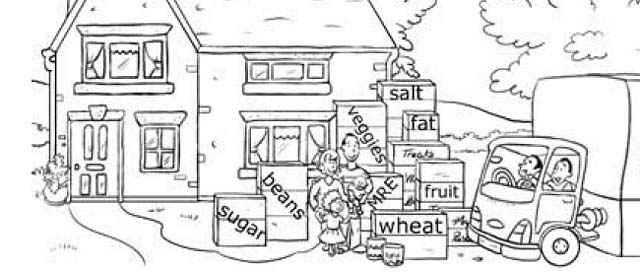Survival Preparedness Food Preps – Raw Ingredients vs Prepared Foods

“When the emergency is upon us, the time of preparation has passed.”
If you’re new to preparedness, you’re probably focusing first on food storage. If you’ve been preparedness-minded for awhile, you probably revisit your food storage once in a while to re-evaluate.
Here’s a consideration: While purchasing so called ‘prepared foods’ may provide a quick-and-easy way to fill your pantry with foods that are pretty much ‘ready to eat’, you might also consider purchasing bulk raw ingredients for your food storage to facilitate preparing your own foods ‘from scratch’ so to speak…
There are a few techniques or philosophies as to how best go about building your preparedness food storage preps.
One, to buy pre-made ready-made foods (canned foods, packaged foods, food survival kits ready-to-eat, and typical grocery store items).
Two, to buy the raw ingredients that are used to make, prepare, and cook your own meals ‘from scratch’.
Three to buy a combination of both.
Buying food pre-made or pre-packaged foods for your food storage is simple, easy, quick, and doesn’t require particular skills in order to eat. For someone who is behind in prepping and preparedness, they can quickly catch up by purchasing foods this way.
Buying the raw ingredients (food staples) for your food storage will likely be more cost-friendly (in the long run), while the method will require a deeper commitment to food storage and preparation skills, cooking skills, and ‘know-how’ in order to prepare meals.
In addition to a storage of prepared foods, consider buying the ingredients themselves.
Raw ingredients such as salt, sugar, honey, rice, wheat, and dry beans will generally last a lot longer than ‘prepared foods’. In fact some of these ingredients have an indefinite shelf life. Others will have a shelf life of many many years (even decades) if stored properly.
Here is a list of ideas for various raw ingredients to consider for one’s food storage. I’m simply ‘brainstorming’ here in no particular order, so feel free to add your own recommendations…
Beans (dry) (variety)
Rice (white)
Wheat berries
Flour
Cornmeal
Oats, Oatmeal
Cooking oil
Sugar
Honey
Spices (too many to list)
Powdered milk (non-fat dry)
Baking Powder
Baking Soda
Yeast
Vinegar
Cocoa
Instant potato flakes
Pastas (spaghetti, macaroni, etc..)
Note: An emphasis here is to consider diversification into raw ingredients for your food storage (food staples) and to learn how to cook. Get yourself some recipe books…
Add your own recommendations to the short list above. Additionally, if you have a favorite practical recipe book, let the rest of us know…
